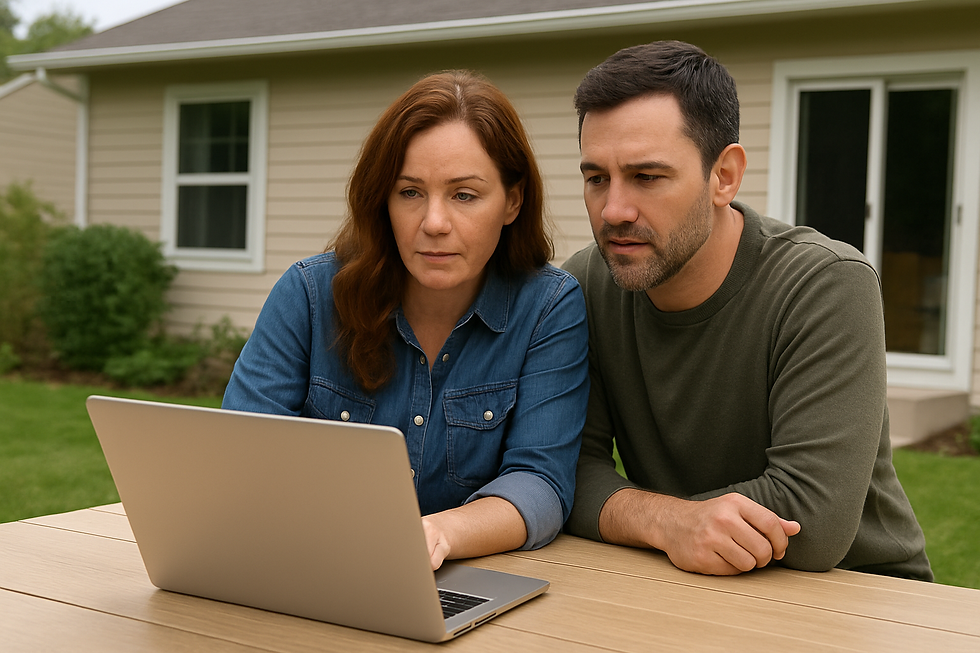Effective Solutions for Roof Repairs
- Office Email
- 3 days ago
- 4 min read
When it comes to maintaining a home, few things are as critical as a sturdy, well-maintained roof. A damaged roof can lead to leaks, structural issues, and costly repairs if left unattended. Over the years, I have learned that addressing roof problems early and effectively is the key to protecting your home and your investment. In this post, I will share practical solutions to fix roof problems, helping you understand what to look for, how to approach repairs, and when to call in the professionals.
Identifying Common Roof Problems and How to Fix Roof Problems
Before diving into solutions, it’s important to recognize the most common roof issues. These include:
Leaks and water damage: Often caused by damaged shingles, cracked flashing, or clogged gutters.
Missing or broken shingles: Resulting from storms, wind, or aging materials.
Sagging roof deck: Usually a sign of structural damage or water infiltration.
Granule loss on shingles: Indicates aging and wear.
Moss and algae growth: Can trap moisture and damage roofing materials.
To fix roof problems effectively, start with a thorough inspection. Look for damaged or missing shingles, check the flashing around chimneys and vents, and inspect gutters for blockages. Small issues like a few missing shingles can often be replaced easily with the right tools and materials. For example, using roofing cement and new shingles, you can patch up minor damage yourself.
For more extensive damage, such as sagging or widespread leaks, it’s best to consult a professional roofer. They can assess the structural integrity and recommend repairs or replacements as needed.

Practical Tips to Fix Roof Problems Quickly and Safely
When tackling roof repairs, safety is paramount. Always use a sturdy ladder, wear non-slip shoes, and consider a harness if working on steep roofs. Here are some practical tips to get started:
Clean the roof surface: Remove debris, moss, and algae using a soft brush or a gentle pressure wash.
Replace damaged shingles: Lift the surrounding shingles carefully, remove nails, and slide in new shingles.
Seal leaks with roofing cement: Apply around flashing, vents, and small cracks.
Clear gutters and downspouts: Ensure water flows freely to prevent pooling and damage.
Trim overhanging branches: Prevent damage from falling limbs and reduce moss growth.
If you’re unsure about any step, don’t hesitate to reach out to experts. Sometimes, a quick consultation can save you from costly mistakes.

How Much Should a Roof Repair Be?
One of the most common questions I get is about the cost of roof repairs. The truth is, the price varies widely depending on the extent of the damage, the type of roofing material, and your location. Here’s a rough breakdown:
Minor repairs (e.g., replacing a few shingles, sealing small leaks): $150 - $400
Moderate repairs (e.g., fixing flashing, patching larger areas): $400 - $1,000
Major repairs (e.g., structural fixes, extensive shingle replacement): $1,000 - $3,000 or more
Keep in mind that these are ballpark figures. Factors like roof pitch, accessibility, and material costs can influence the final price. Always get multiple quotes and check for warranties or guarantees.
If your roof damage is due to a storm or other insured event, you might be eligible for coverage. In such cases, professional assistance with insurance claims can make a big difference. For reliable help, consider consulting roof repair specialists who understand the insurance process and can guide you through it.
When to DIY and When to Call a Professional
While some roof repairs are manageable for a confident DIYer, others require professional expertise. Here’s how to decide:
DIY if:
- The damage is minor and easily accessible.
- You have the right tools and safety equipment.
- You understand roofing materials and repair techniques.
Call a professional if:
- The damage is extensive or structural.
- You notice sagging or water damage inside your home.
- The roof is steep or difficult to access.
- You want to ensure the repair is done correctly and safely.
Professionals bring experience, specialized tools, and warranties that protect your investment. They can also spot hidden issues that might be missed during a DIY inspection.
Preventative Measures to Avoid Future Roof Problems
Fixing roof problems is important, but preventing them is even better. Here are some proactive steps to keep your roof in top shape:
Regular inspections: Check your roof at least twice a year and after major storms.
Clean gutters and downspouts: Prevent water buildup and ice dams.
Trim trees near the roof: Avoid damage from falling branches and reduce moss growth.
Maintain attic ventilation: Proper airflow prevents moisture buildup and extends roof life.
Address minor issues promptly: Don’t wait for small leaks or damaged shingles to worsen.
By staying on top of maintenance, you can extend the life of your roof and avoid costly repairs down the line.
Taking care of your roof is an ongoing process, but with the right knowledge and approach, you can fix roof problems effectively and keep your home safe and dry. Whether you choose to tackle minor repairs yourself or hire a professional, the key is to act promptly and stay vigilant. Remember, a well-maintained roof is your home’s first line of defense against the elements.







Comments